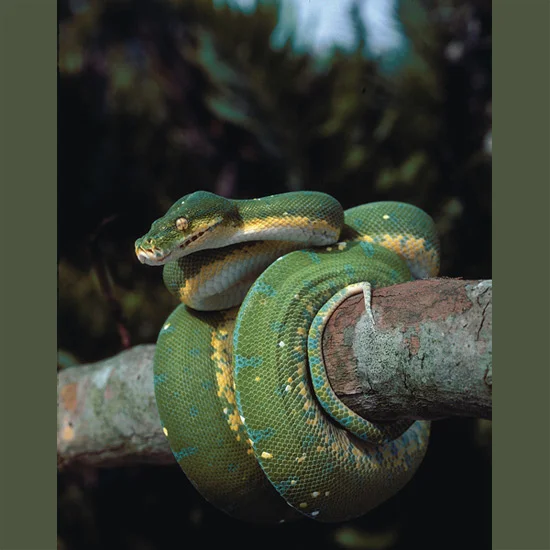Papua New Guinea
“Birds of paradise were named not for beauty but supposed heavenly connections after stuffed skins without legs were sent back to Europeans, leading them to surmise the birds had no legs but descended to earth from Heaven and spent their entire lives in midair.
Papua New Guinea remains much as naturalist Alfred Wallace found it in 1858, one of the wildest places on earth with “more strange, new and beautiful natural objects than any other part of the globe.”
Most of the world’s gorgeous birds of paradise are here, enacting acrobatic and often bizarre mating rituals. Their names derive not from dazzling plumage but once-supposed celestial connections—the first brilliantly feathered stuffed skins were sent back to Europe legless, which led to supposition they descended from heaven and soared continually, mating in midair and raising young in nests on males’ backs.
Victoria crowned pigeons—world’s largest—display ice-lavender, lacy, feather-fan crests several times the size of their heads. Bower birds lure mates with elaborate constructions that are a wonder of the avian world, inventive creations of flowers, grasses, seeds, beetle wings, shells, bits of glass if they can find them, sometimes painted with fruit juice or droppings. Chicken-sized megapods— “big feet”—don’t incubate eggs but dig tunnels in volcanic soil where constant geothermal heat incubates them. Flightless six-foot-tall (2-m) cassowaries have a large, daggerlike claw on each foot that can kill and dismember a man. Papua New Guinea has more kinds of parrots, pigeons, and kingfishers than anywhere else in the world.
Orchids grow in every conceivable color, size, and shape—some 3,000 varieties—among some 20,000 kinds of flowering plants, including 1,200 tree species in the lowlands alone.
Giant birdwing butterflies on wingspans nearly a foot (30 cm) across flutter through canopies— the first European hunter who saw one shot it thinking it WAS a bird. Their niche is filled at night by the world’s largest moths, the huge Hercules—among 6,000 colorful lepidoptera species.
Tree-climbing kangaroos and spiny, egg-laying echidnas are among some 180 kinds of mammals including some 60 pouched marsupials, evidence of the island’s connection until about 6,000 years ago with northern Australia. Large mammal predators are absent—largest are little pouched bronze quolls—one reason for presence of so many unusual birds as well as other small species in this relatively small country of 178,704 square miles (462,843 km2). Only slightly larger than the U.S. state of California, it occupies the eastern half of the island of New Guinea (the western half is Indonesia’s Irian Jaya).
About 25,000 kinds of beetles thrive, some so strikingly beautiful they are collected as body ornaments; 160 kinds of frogs; 170 kinds of lizards including both salt and freshwater crocodiles; and 110 kinds of snakes, including sea snakes, tree snakes, and pythons.
Scientists continue to discover new species as they explore this relatively young island. New Guinea was pushed up by collision of two undersea tectonic plates over the past few million years creating rugged, deeply folded terrain which has resulted in separate, isolated development of a wide variety of human cultures as well as extraordinary biodiversity. People of New Guinea speak over 750 distinctly different indigenous languages.
Habitat ranges from alpine glaciers though forested mountains to flat grasslands, lowland mangrove swamps and golden sand beaches with beautiful offshore coral reefs.
Climate varies over the country. It’s hot, humid and wet year-round in the lowlands, wetter December–March and drier May–October, and Port Moresby seasonally is dry, even dusty.
Most visitors arrive by air in Port Moresby, usually from Australia but also Singapore, Manila, and elsewhere. The national airline, Air Niugini, connects larger interior communities. Roads are limited, as are accommodations, but tourist facilities are gradually improving. Water transport is widely available.
Wildlife reserves are few, in large part because of P.N.G.’s traditional land tenure—but the National Parks Board recognizes provincial and local parks as Wildlife Management Areas, and there’s growing awareness of the concept of protected species and conservation, spread with help of international conservation organizations such as World Wide Fund for Nature, Wildlife Conservation Society, The Nature Conservancy, and Conservation International. In some casesthese groups advise local committees on management of reserve areas.
Papua New Guinea
CRATER MOUNTAIN WILDLIFE MANAGEMENT AREA
TARU KIKORI RIVER BASIN as well as...
Kikori Integrated Conservation and Development Project
Varitata National Park
More about the Reserves in Papua New Guinea
Each button selection will take you to a site outside the Nature's Strongholds site, in a separate window so that you may easily return to the reserve page.
Advertisement






